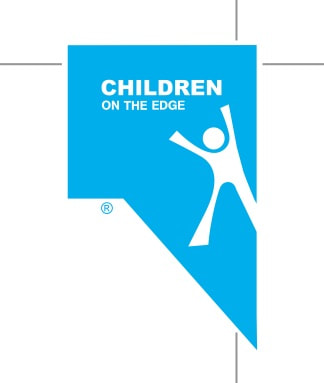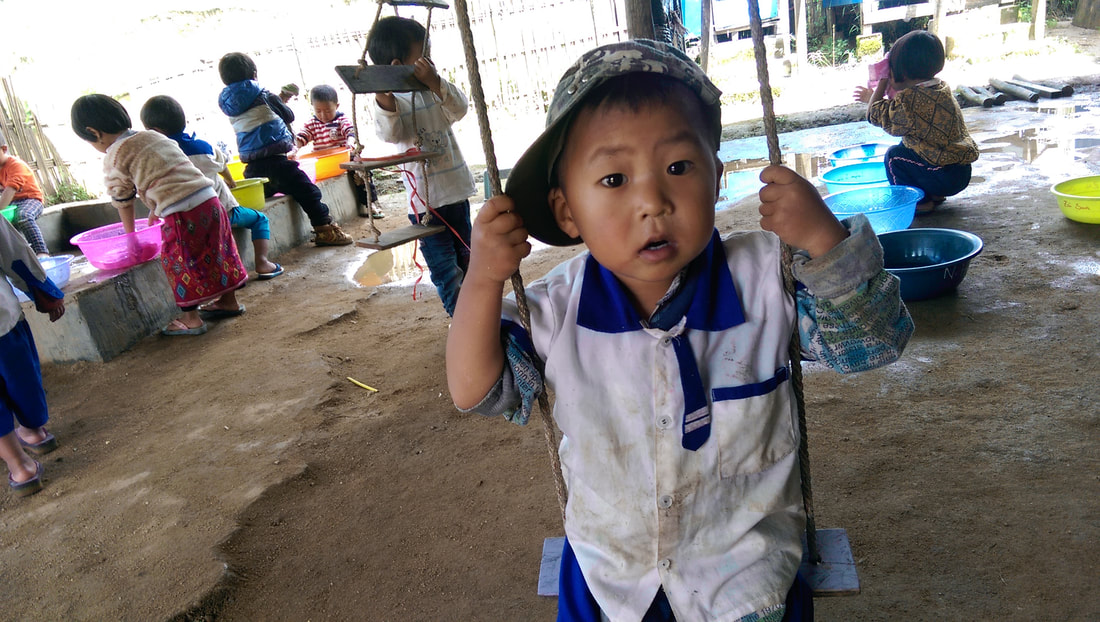Project: Safe spaces for children displaced by conflict in Kachin, Myanmar
|
Mission: To reach the most vulnerable children, those living on the edge of their society, ignored by international media and larger aid agencies. We often access places where no other international organizations are able to, and it is here that we work alongside communities to ensure they are able to survive and provide for their children.
|
Description: Children on the Edge have been working in Myanmar since 2012 providing 14 safe spaces, warm clothing and aid for young displaced children. These children are trapped in camps within war zones, in the mountainous regions bordering China. These children have spent their whole lives in these temporary and precarious camps and are incredibly traumatised by events they have witnessed.
Operating in an environment like Kachin state requires local partners who understand the situation on the ground and have the networks to deliver services in these circumstances. Children on the Edge work with the Kachin Women’s Association (KWA), who have been supporting women and children in Kachin state for 20 years, to provide education and safe spaces. Procuring and supplying materials is managed by Kachin Development Group (KDG) which maintains one of the most established networks in the state, enabling them to navigate logistical issues where control of major access routes is continually in flux. These partnerships, coupled with years of experience from Children on the Edge providing meaningful assistance in difficult circumstances, has yielded a programme which is bringing desperately needed services to areas where there is simply no other support. |
Donation Impact
How will your donation be used?$20 will provide two sets of warm clothing for a child
$120 will cover the costs of a teacher for a year $1800 will give 100 children warm clothes $4250 will pay for all the child friendly teaching and learning materials needed across all 14 centres $6800 will cover the costs of all 56 teachers for a year |
Field Updates 2017
|
The displacement of Zai Awng camp
In 2012 we heard first-hand accounts of those fleeing the conflict, who spoke of brutal violence, ongoing atrocities and severe violations of human rights including the wide-spread burning of villages, rape, maiming and executions. Now the government appears determined to crush this last remaining pocket of wide-spread armed resistance in Myanmar and their tactics have been increasingly harsh. In October, with significant natural resources and political influence at stake, they began to use jets, helicopters and shelling to attack civilians in the camps where we work. Zai Awng was one of the camps hit the hardest, with 3,000 displaced Kachin people living up in the mountains on the China border, taking refuge there since 2012. The October air attacks drove them out of the camp and over the border into China where they were badly beaten by authorities. Forced to turn back to Myanmar, they hid in the jungle until the troops withdrew. They returned to Zai Awng but in November the shelling resumed and they had no option but to flee again, hiding in a different part of China, then taking a different route back over the border. Any people who attempted within that month to return to the old camp disappeared, so the 2,000 people that remained built a new camp, closer to Laiza, called Sha It Yang. The terrified community are hoping this location could be safer, but are traumatised by their experience and livng with the knowledge that if they are attacked again, there is nowhere to run to. The conditions here are appalling, with thousands of people living under tarpaulin and only one road in or out. Food supplies are scant and the water is unsanitary, especially after rain, which saturates the area causing many problems. Three teachers from our Centre in the original camp have remained with the community and worked to re-build a safe space for children. They have set up two classes but there is need for another four. Children are in desperate need of support after what they have been through, with teachers reporting that the even Chinese New Year firecrackers heard across the border are now terrifying for them. One teacher said, “We are doing the best we can, but naturally the children are quieter, less active and less able to be engaged and creative. The wider community is so tired of the fighting, they just want to go home, and they don’t understand why the world isn’t paying attention”. |
Lwin Moe
Lwin Moe is 5 years old and her family fled when she was a baby. She has known nothing beyond war and, as a consequence, is naturally fearful and retiring. When she attended the Centres at first, she was totally silent. One afternoon last year, when Lwin Moe was at the Centre, the Myanmar army dropped artillery shells which hit dangerously close to the building. The children were quickly evacuated and sent home. They had been in the middle of drawing, but had to pick up their papers and run. The teacher asked them to finish the drawings at home. That afternoon Lwin Moe asked for colouring pencils to finish the drawing, but her mother didn’t have any, and had no way of buying them. Lwin Moe was inconsolable, to the point that she cried all afternoon and wouldn’t eat. Her mother went to find the teacher, who visited their home, and brought a pack of colouring pencils for Lwin Moe to keep. This small act of kindness was a turning point for Lwin Moe. She was so happy to have the pencils that she spent the evening drawing and ran into school to show the teachers in the morning. Since this point Lwin Moe has joined in happily at school. The teacher said “It’s true that every child is different in the way they learn. With Lwin Moe, her teachers and parents have been supporting her, but in these kinds of situations there are lots of children who are in need of extra support”. Creating a sense of safety, care and individual attention for these young children is a vital part of preserving wellbeing and giving them a chance to develop, despite their circumstances. Le Thu Win
14-month-old Le Thu Win was born in the IDP camp at Pajau. Her family have had to take shelter there since 2011, due to armed conflict between the Kachin Independence Army and the Burmese military. Le Thu Win is the third daughter of the family. Her eldest sister passed away soon after being born and now her elder sister is three years old and attending on of the ECD Centres we support. Sadly, when Le Thu Win was born, her father was not happy. With two elder girls, he was hoping for a boy, and after this point abandoned the family frequently, choosing to spend time with friends. She was born with a cleft palate which concerned her mother, especially as it created difficulty with breast feeding. Le Thu Win and another young boy called Wai Myo Lin from a neighbouring camp were supported to take a 16-day round trip to Mandalar Hospital. Here, Smile Train provided treatment which went ahead smoothly and without complications. Longer term the surgery has proved very successful and since this point, both of them have been living happily with their families. Bawk Hkun from the Kachin Development Group says “This is new experience for KDG. We consider this as a collaborative initiative between Children on the Edge, Smile Train and ourselves which proves as an example that the things we previously saw as impossible can be solved with collaboration and networking among agencies”. |





